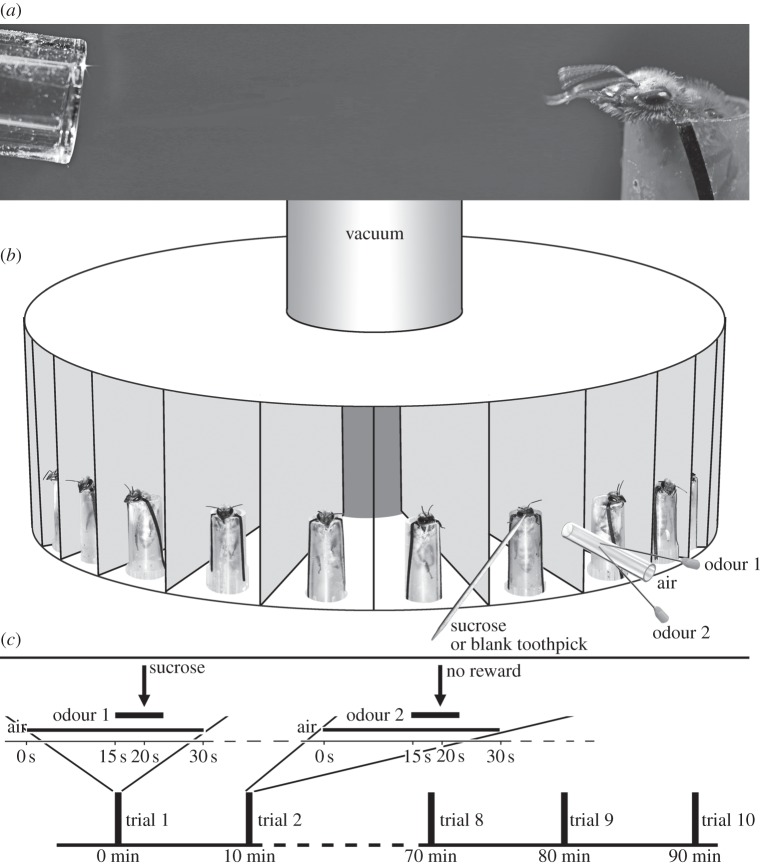Figure 1.
Experimental design. (a) A conditioned honeybee responds by proboscis extension to a deuterated acetophenone stimulus (odour not visible). (b) Rotary training set-up; bees are individually treated with an air current into which either odour 1 or odour 2 is injected; then the antennae and proboscis (if extended) are stimulated with sucrose. Alternatively, for unrewarded trials, during the odour stimulus, the antenna is touched with a blank unwetted toothpick. (c) Training paradigm: trials last for 30 s and for each bee are repeated every 10 min. Trials (enlarged) comprise an air current into which odour is injected after 15 s; after 5 s of odour stimulation, the antennae and proboscis are touched with sucrose solution. For absolute conditioning only one odour is used (10 trials); for differential conditioning, two odours are alternated pseudo-randomly every 10 min (20 trials total).

